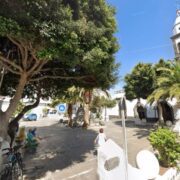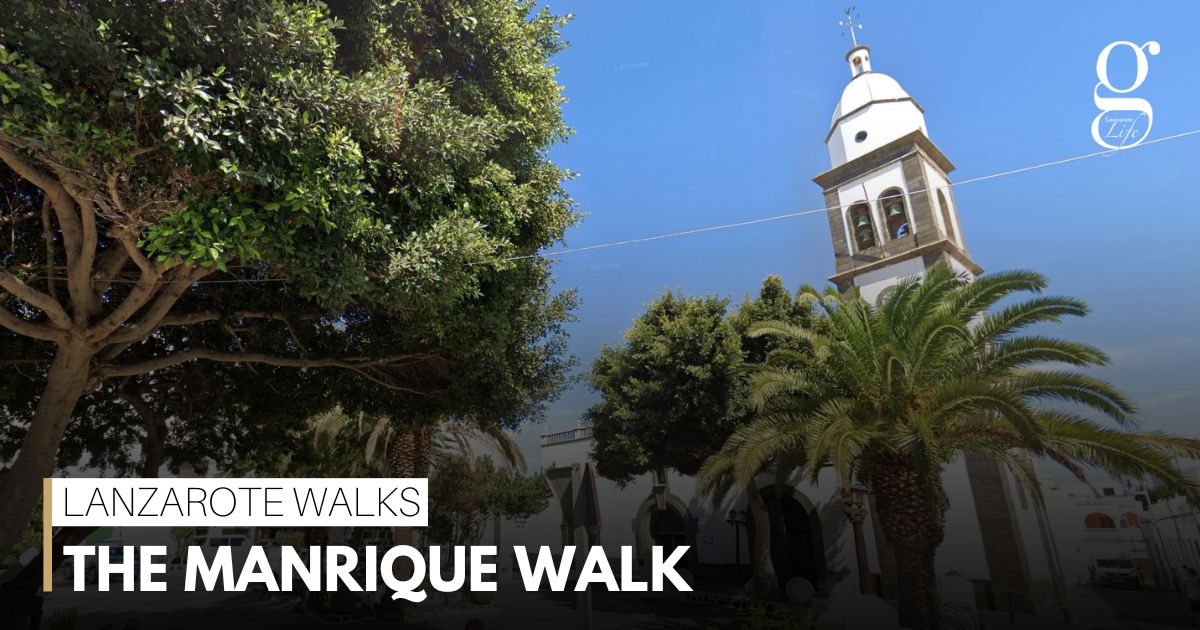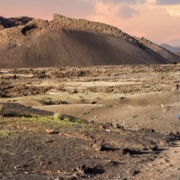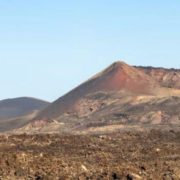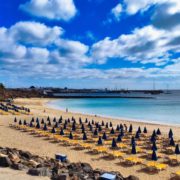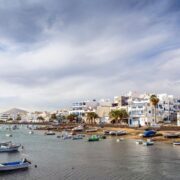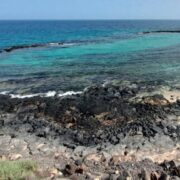The majority of visitors discover César Manrique through his stunning work at places such as the Jameos del Agua, the Cactus Garden and the other Centres of Arts and Tourism on Lanzarote. However, if you want to discover more about the man who changed the island, then Arrecife is the place to start.
Our Manrique walk begins in the gardens of the Hospital Insular. Manrique built a sculpture in 1968 to honour Dr José Molina Orosa, the man who dedicated his life to the health of the people of Lanzarote and who built the island’s first hospital. His sculpture, surrounded by palms, represents the Canarian drago tree and shows two volcanic boulders balanced by a metal collar.
As we approach the Charco de San Ginés we pass the house that César Manrique was born in, now a busy restaurant. Manrique spent his early years playing around the Charco.
Past the Charco and entering Arrecife’s centre we reach the Plaza de Palmas where the weekly market is held every Saturday morning. César designed this space – the white spheres and walls reflect the Puente de las Bolas (Bridge of the Balls) on the seafront.
Back on the seafront we find a large park area facing the sea. This is the Parque José Ramirez Cerda, named after the visionary Cabildo President who recalled Manrique to his native island in the 1960s. Manrique designed much of this park and the Parque Islas Canarias further along the seafront.
Opposite the Puente de las Bolas stands the Casa de Cultura Agustín de la Hoz, an exhibition centre where two more Manrique murals are on display. The building was once a Casino, and the murals were neglected. Extensive restoration works have taken place over the years, and they offer an impressive glimpse into Manrique’s work as a painter.
A little further along the seafront, the large white building that currently houses the UNED distance learning university is another Manrique treasure trove. If you ask at reception, you may be permitted to see the stunning murals Manrique created for the building when it opened as the island’s first Parador (state hotel).
Around the corner is Arrecife’s Royal Nautical Club, where Manrique’s brother Carlos was a long-standing member. Above the bar is the mural titled “Anatomy of a Boat”, made with wood from a wrecked ship and signed by Manrique in 1962.
A few streets away is the El Almacén arts centre, a collaborative project founded by Manrique and his artist friends Pepe Dámaso, Yayo Fontes and Luis Ibánez in 1974.
The name El Almacén (The Warehouse) reflects the influence of Warhol’s Factory. But while the Factory was a studio where art was created, El Almacén was a place where art was kept and preserved.
Today it houses various exhibition spaces, workshops, cinema and a café/restaurant.
Finally, behind the Gran Hotel is the Islote de Fermin, a recently-restored island that Manrique designed as a pool complex. It’s an incredible place, and the perfect spot for a coffee.
RELATED LINKS
Visiting the Islote de la Fermina
For regular updates, pictures and videos of Lanzarote be sure to like and follow our Facebook page “Gazette Life Lanzarote”.

